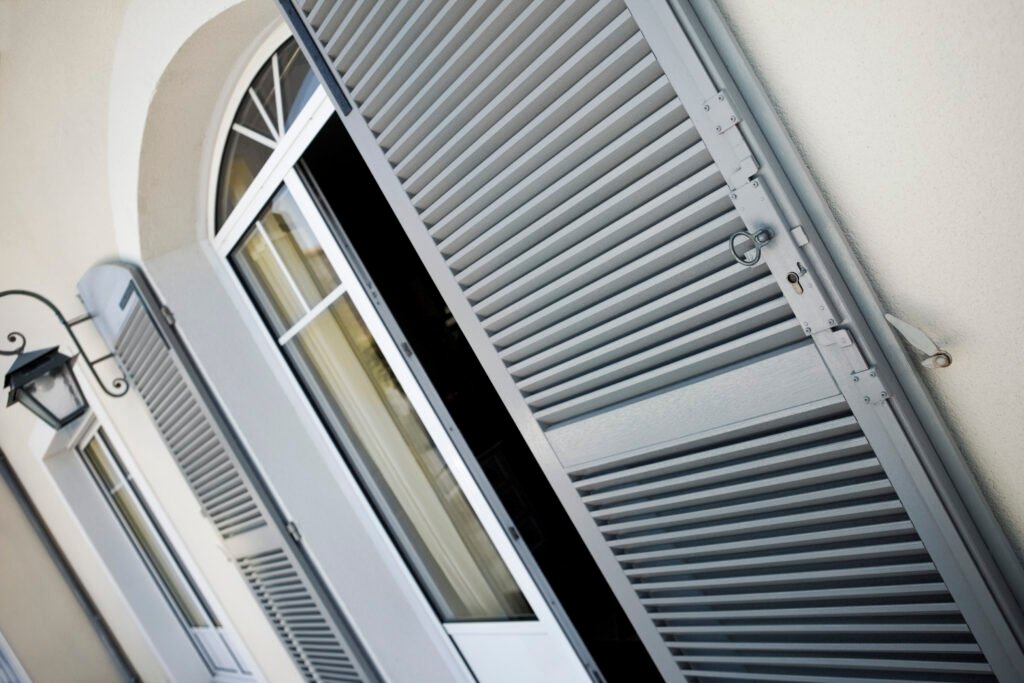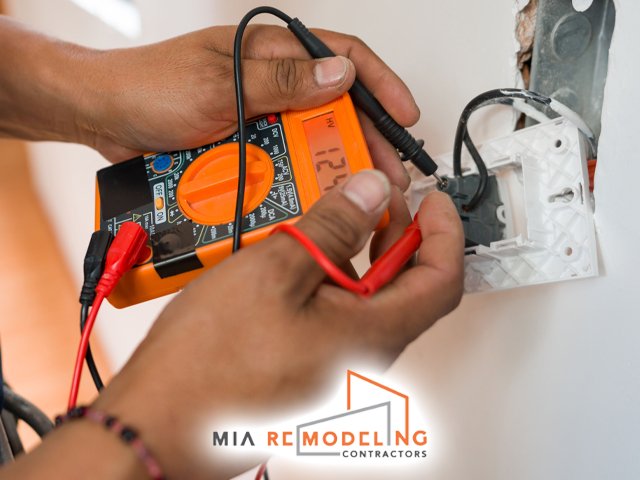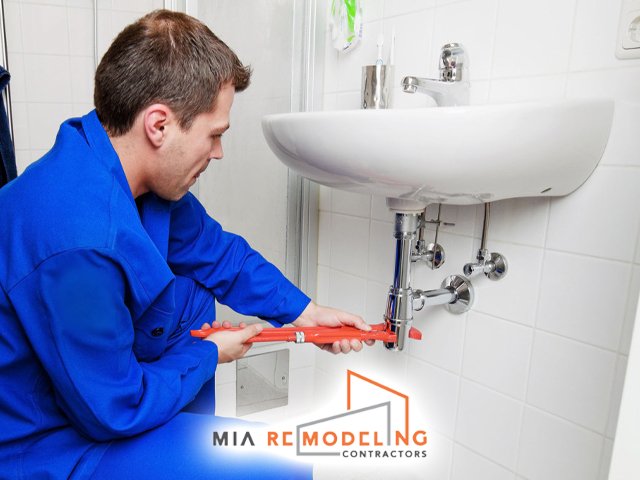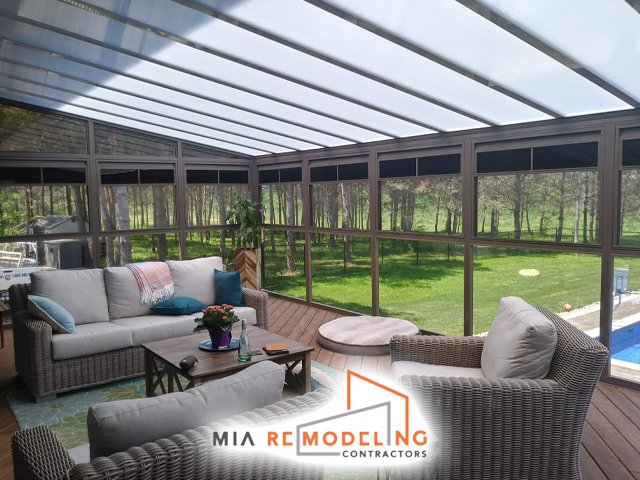When you live in Miami Beach, FL, you already know the drill—every summer, the sky throws a wild party and hurricanes barge in like uninvited guests. Kitchens end up taking a beating since they’re often the home’s busiest and most exposed spots. But what if your kitchen could stand tall and strong, keeping you and your pancakes safe, while the wind and rain splash around outside? That’s where hurricane-rated windows and doors swing into action. So, grab your favorite snack, sit back, and let’s chat about what truly keeps your kitchen safe during storm season.
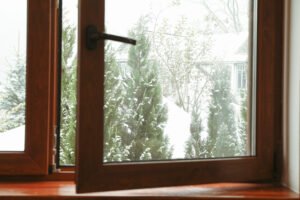
Why Your Kitchen Needs More Than Just Pretty Windows
So, picture this: the rain pounds on the window while you’re flipping some eggs. And then—WHAM!—a tree branch smacks against the glass. If your windows aren’t impact-rated, that’s a recipe for disaster. Broken glass, flying debris, soggy toast. Nobody wants that.
A hurricane doesn’t pull its punches. The kitchen often has large windows and often, a back door to the patio or yard. If those weak points let the wind rip through, the inside of your house can pressurize like a shaken soda can. Windows and doors pop, and kitchens turn into slip-n-slides for blenders and breakfast plates. That’s why we need to look past those simple glass panes and choose windows and doors built for the wild weather.
What Are Hurricane-Rated Windows and Doors?
Imagine wearing a full suit of armor before heading into battle. That’s what hurricane-rated windows and doors do for your kitchen. They’re not just regular glass and wood—or worse, a flimsy screen door you picked up on sale.
Impact-Tested Glass: The Shield on Your Fortress
Hurricane-rated windows and doors use impact-tested glass. This isn’t your basic window glass that shatters with a tap of a spoon (we’ve all seen that happen on accident). Instead, think about the windshield on your car. When something hits it, it might crack, but it won’t fall to bits. That’s because it uses laminated glass. For hurricanes, windows add even more strength, with multiple layers and sometimes, special films sandwiched between.
- Two sheets of thick glass: Stuck together with a special, strong plastic.
- Layer between glass: This plastic (usually polyvinyl butyral or PVB) acts like invisible tape, holding everything together if something hits.
- Tested by flying debris: Manufacturers don’t just hope it works. They launch two-by-fours, metal balls, and other debris at these windows to see what happens. Only windows that can stand up to this join the hurricane club.
Reinforced Frames: The Muscle Holding It All Together
Windows and doors can have tough glass, but if the frames are weak, that’s like guarding your castle with a tin can fence. Hurricane-rated frames use durable materials—aluminum, vinyl, or steel. The fasteners and locks are reinforced so the whole structure sticks together even under pressure.
Let’s think about this like building a LEGO castle. If you use weak little pieces, any bump knocks it over. But if you build with the big blocks and snap everything tight, it’ll hold up to the wildest attack.
Super-Tough Doors: Not Just for Show
Every kitchen needs a door, but in Miami Beach, those doors can be the weak link. A hurricane-rated door has:
- Solid, impact-resistant cores: No fake wood filling here.
- Multi-point locking systems: Like having several deadbolts instead of just one.
- Weather-stripping and seals: Slam the door and these keep out the rain and wind.
Don’t forget about glass inserts! If your kitchen door has a glass panel, it should be just as impact-tested as the windows.
Sealing Out Trouble: Keeping Wind and Water Outside
An unsealed window in Miami is like wearing flip-flops in a puddle—your socks are going to get wet, and you won’t be happy about it. Strong glass and frames need backup from great sealing.
Why Sealing Is Not Just About Drips
When hurricanes blow in, the wind doesn’t just tap on the window. It shoves and howls, trying any trick to sneak inside. Little cracks around the frame become wind tunnels, letting water inside and sending your electric bill sky-high. Even mold joins the party if there’s water indoors.
Simple Sealing Tips for Kitchens
- Weatherstripping: This goes around the edges of your window and doors. If you can see daylight or feel a breeze, it’s time for fresh strips.
- Caulking: Squeeze this magic goo anywhere the frame meets the wall. If the old caulk is cracking, peel it out and lay down a new bead.
- Thresholds and sweeps: Doors need tight seals along the floor. If your door whistles in the kitchen, a better sweep keeps wind and bugs out.
- Regular Checks: Every few months, check for cracks, peels, wobbly handles. If you spot trouble, fix it right away.
Think of this as keeping your castle’s moat in top shape. It keeps trouble out and makes your kitchen snug as a bug, even when the raindrops sound like tap shoes on the roof.
My “Pancake Story”—A Hurricane Lesson Learned the Hard Way
Everybody loves a good kitchen story, right? A few years back, I was cooking pancakes with the family during a storm warning. Suddenly, a gust of wind ripped the old back door open. Rain blasted into the kitchen, and flipping pancakes turned into a round of “mop the floor with your slippers.” The kids loved the excitement, but we spent more time cleaning up than eating breakfast.
Lesson learned. No more wimpy doors or windows—and certainly no more soggy pancakes.
Common Questions About Hurricane-Rated Windows and Doors
1. Can I put hurricane film on my regular windows and call it good?
While hurricane film offers a bit of extra protection, it’s not the full armor. It might keep the glass from shattering everywhere, but it doesn’t stop the wind and water from blowing the frame out. Hurricane-rated windows offer complete protection—the glass, frame, and seals all work together.
2. Do hurricane windows and doors look like mini-jails with bars?
No way! These days, hurricane-rated windows and doors come in all shapes, sizes, and colors. Many look just like stylish, modern windows. Unless you’re inviting a hurricane inspector for dinner, nobody will even notice the difference.
3. Is it really worth the cost?
Can you put a price on a dry kitchen and peace of mind? Hurricane windows and doors can lower your insurance bill, save money on electricity, and, most importantly, keep your TV and your dog safe from the wild weather outside.
How Do You Pick the Right Windows and Doors for Your Kitchen?
You don’t want to play “eeny, meeny, miny, moe” with kitchen safety. Picking the right option means thinking about:
- Size and style: Find windows and doors that fit your kitchen’s space and your taste.
- Approval ratings: In Miami Beach, look for products approved by the Miami-Dade County code. These have survived real-world and lab tests.
- Professional installation: Even the toughest window is only as good as its installation.
Don’t forget, kitchens often have sliding doors to the backyard or patio. These doors are big targets for wind and flying objects, so they should be hurricane-rated too.
Extra Features That Make Life Better Year-Round
- Quieter evenings: Block out loud car music, barking dogs, and party people next door.
- Lower bills: The insulation keeps cold air where it belongs—in your house, making you happy.
- Safe from break-ins: If a hurricane can’t bust through, you think a burglar will try? Doubtful.
DIY vs. Pro: Who Should Update Your Windows and Doors?
Handy with a drill? Even then, installing hurricane-rated windows and doors is tricky. Frames must be square, bolts extra-strong, seals tight. Mess it up, and you won’t know until the wind comes knocking. Plus, Miami Beach has building codes—miss a step, and you could get in hot water with inspectors (and your insurance company).
That’s why most folks call the pros. It saves time, stress, and, most of all, keeps your kitchen ready for batten-down-the-hatches season.
Upgrades That Matter: Don’t Forget These Details
- Tinted or Low-E Glass: Cut down glare and keep the kitchen cooler.
- Egress Windows: Make sure there’s still a way out in an emergency.
- Smart Locks: Add a touch of tech—keep your kitchen secure, even when you’re out fishing.
Your Storm-Ready Checklist for Kitchens
Gearing up for hurricane season? Here’s a quick list to make sure your kitchen is ready for anything Mother Nature tosses your way:
- Check the windows and doors: Look for cracks, gaps, and wobbles.
- Upgrade to impact-resistant glass: Don’t rely on tapes or plywood.
- Replace weak frames: Steel, composite, or heavy vinyl will stand tall.
- Seal everything: Weatherstripping and caulk for win!
- Double-check locks and handles: Everything should shut tight.
- Have a pro sign off: A quick inspection now can save you a flooded kitchen later.
Why Mia Remodeling Contractors Is Miami Beach’s Go-To for Hurricane Protection
Let’s face it, not everyone has time to become a hurricane window expert—or wrestle with heavy doors in 100-degree weather! That’s where Mia Remodeling Contractors comes in. We know Miami Beach, and we’ve seen just about every way a kitchen window or door can fail. Our crew installs hurricane-rated windows and doors built to keep your family (and your secret chili recipe) safe, rain or shine.
With Mia Remodeling Contractors, you don’t just get products that pass the toughest storm tests—you get the kind of local know-how that comes from working in Miami Beach for years. We handle permits, codes, and those little details that matter, so you can relax while your kitchen stays safe and dry.
Want to storm-proof your kitchen and keep your peace of mind all season long? Give Mia Remodeling Contractors a call at
(954) 355-1520 or visit
https://miaremodelingcontractors.com/ for a free estimate. You’ll be cooking up a storm soon (and the real one will stay outside where it belongs).

